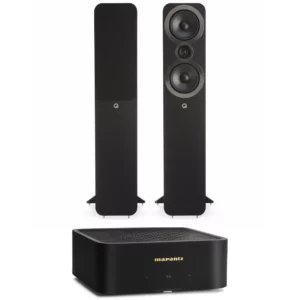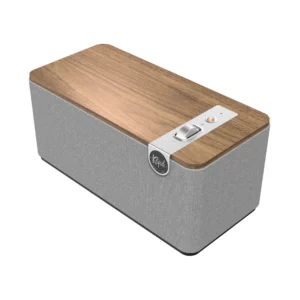Types of tweeters used in a speaker with their advantages and disadvantages
Tweeters are a type of loudspeaker driver that is designed to reproduce high-frequency sounds, such as cymbals, string instruments, and vocals. They are typically smaller than other types of drivers and are responsible for producing the highest frequency sounds in a speaker system.
Tweeters work by converting electrical signals into sound waves. When an audio signal is sent to the tweeter, it passes through a coil of wire that is attached to a diaphragm. The audio signal causes the coil to move back and forth rapidly, which in turn causes the diaphragm to vibrate at the same frequency as the audio signal. As the diaphragm vibrates, it creates sound waves that radiate outwards from the speaker cone.
The design of the tweeter is important in determining the quality of the sound that it produces. For example, the shape and size of the diaphragm can affect the dispersion pattern of the sound waves and the overall frequency response of the tweeter. The materials used in the construction of the diaphragm, such as silk, aluminium, or ceramic, can also impact the sound quality.
In addition to the diaphragm, tweeters often feature an acoustic lens or waveguide that helps to control the direction and dispersion of the sound waves. This can be important in creating a more balanced and accurate sound in a listening environment.
Overall, tweeters are essential components of a speaker system, as they are responsible for reproducing the high-frequency sounds that give music and other audio content clarity and detail. The design and construction of the tweeter can have a significant impact on the overall sound quality of the speaker system, making it an important consideration for audiophiles and professionals in music and sound.
Speakers come in all shapes and sizes, but one of the most important components of a speaker is the tweeter. There are several different types of tweeters used in speakers, each with its own set of advantages and disadvantages. In this article, we will discuss the different types of tweeters used in speakers and their pros and cons.
Dome Tweeters

Dome tweeters are the most common type of tweeter found in speakers today. They are called dome tweeters because they have a dome-shaped diaphragm that vibrates to produce sound. The dome is usually made of materials such as silk, polyester, or aluminium. These materials are chosen for their ability to produce high-frequency sounds accurately.
Advantages:
- Dome tweeters are relatively affordable compared to other types of tweeters.
- They produce a wide dispersion of sound, meaning they can be placed in different locations in a room and still produce good sound quality.
- They are easy to drive, meaning they don’t require a lot of power to produce sound.
Disadvantages:
- The dome-shaped diaphragm can be easily damaged if the speaker is played too loudly.
- They can produce distortion at high volumes, which can affect the quality of the sound.
- They may not be as accurate as other types of tweeters, such as ribbon tweeters.
Ribbon Tweeters

Ribbon tweeters use a thin strip of metal, usually aluminium or a special alloy, that vibrates to produce sound. The metal strip is suspended between two magnets, and when an electrical current is passed through the strip, it vibrates and produces sound. Ribbon tweeters are known for their ability to produce very accurate high-frequency sounds.
Advantages:
- Ribbon tweeters are known for their accuracy in reproducing high-frequency sounds.
- They can produce very detailed sound, which can be important for audiophiles or professional musicians.
- They have a very low distortion rate, even at high volumes.
Disadvantages:
- Ribbon tweeters are usually more expensive than other types of tweeters.
- They are more fragile than other types of tweeters and can be easily damaged if not handled carefully.
- They may not produce as wide a dispersion of sound as dome tweeters.
Planar Magnetic Tweeters

Planar magnetic tweeters use a thin, flat diaphragm made of a material such as mylar or aluminium that is suspended between two magnets. When an electrical current is passed through the diaphragm, it vibrates and produces sound. Planar magnetic tweeters are known for their ability to produce very detailed, accurate high-frequency sounds.
Advantages:
- Planar magnetic tweeters are known for their accuracy in reproducing high-frequency sounds.
- They can produce very detailed sound, which can be important for audiophiles or professional musicians.
- They have a very low distortion rate, even at high volumes.
Disadvantages:
- Planar magnetic tweeters are usually more expensive than other types of tweeters.
- They are more fragile than other types of tweeters and can be easily damaged if not handled carefully.
- They may not produce as wide a dispersion of sound as dome tweeters.
Horn Tweeters

Horn tweeters use a horn-shaped diaphragm to produce sound. The diaphragm is usually made of materials such as titanium or aluminium. Horn tweeters are known for their ability to produce very loud, clear high-frequency sounds.
Advantages:
- Horn tweeters are very efficient, meaning they can produce a lot of sound with very little power.
- They can produce very loud, clear sound, which can be important for live music performances
- They have a wide dispersion of sound, which means they can fill a large space with sound.
Disadvantages:
- Horn tweeters can be quite large and bulky, which can limit their use in smaller speakers.
- They may not produce as accurate sound as other types of tweeters, especially at very high frequencies.
- They can produce some distortion at very high volumes.
Electrostatic Tweeters

Electrostatic tweeters use a thin diaphragm that is coated with a conductive material, such as gold or aluminium, and suspended between two metal plates. When an electrical current is passed through the plates, the diaphragm vibrates and produces sound. Electrostatic tweeters are known for their ability to produce very accurate, detailed high-frequency sounds.
Advantages:
- Electrostatic tweeters are known for their accuracy in reproducing high-frequency sounds.
- They can produce very detailed sound, which can be important for audiophiles or professional musicians.
- They have a very low distortion rate, even at high volumes.
Disadvantages:
- Electrostatic tweeters are usually more expensive than other types of tweeters.
- They are more fragile than other types of tweeters and can be easily damaged if not handled carefully.
- They may not produce as wide a dispersion of sound as dome tweeters.
Compression Tweeters
Compression tweeters use a compression driver to produce sound. The driver consists of a diaphragm and a voice coil that are attached to a horn. When an electrical current is applied to the voice coil, it vibrates the diaphragm, which in turn vibrates the air in the horn and produces sound. Compression tweeters are known for their ability to produce very loud, clear high-frequency sounds.
Advantages:
- Compression tweeters are very efficient, meaning they can produce a lot of sound with very little power.
- They can produce very loud, clear sound, which can be important for live music performances.
- They have a wide dispersion of sound, which means they can be placed in different locations in a room and still produce good sound quality.
Disadvantages:
- Some compression tweeters can be very directional, meaning they produce sound in a specific direction. This can be a disadvantage if the listener is not in the optimal listening position.
- They are usually more expensive than dome tweeters.
- They can produce harsh or bright sound if not designed properly or if played at high volumes.
Air Motion Transformer (AMT) Tweeter

An Air Motion Transformer (AMT) tweeter is a type of transducer that uses a folded diaphragm made from pleated polyester film, with conductive traces etched onto the folds, and a neodymium magnet to produce sound. When an electrical signal is applied to the conductive traces, the diaphragm compresses and expands in a motion similar to that of an accordion. This motion causes air to move back and forth, producing sound.
Advantages:
- AMT tweeters are known for their ability to reproduce high frequencies with excellent accuracy and detail, which makes them popular among audiophiles and professional sound engineers.
- They have a low distortion rate, even at high volumes, which means that they can produce clean, clear sound without any unwanted artefacts.
- AMT tweeters are efficient and can handle a lot of power, which makes them suitable for use in large rooms or outdoor spaces.
Disadvantages:
- AMT tweeters can be more expensive than other types of tweeters, which may put them out of reach for some people.
- They require careful design and construction in order to achieve optimal performance, which can also contribute to their cost.
- They have a relatively narrow sweet spot, meaning that they produce sound in a specific direction and may not be suitable for use in rooms with irregular shapes or where listeners are seated off-axis.
In conclusion, there are several different types of tweeters used in speakers, each with its own set of advantages and disadvantages. Dome tweeters are the most common type and are known for their affordability and wide dispersion of sound. Ribbon AMT and planar magnetic tweeters are known for their accuracy and low distortion rate but are also more expensive and fragile than other types of tweeters. Horn and compression tweeters are very efficient and can produce very loud, clear sound, but can also be very directional and produce harsh or bright sound if not designed properly. Finally, electrostatic tweeters are known for their accuracy but also require a lot of power to produce sound and are fragile.
Tweeters play a critical role in producing high-quality sound in a speaker system. They are responsible for reproducing the highest frequency sounds, such as vocals and cymbals, that give music and other audio content clarity and detail. There are different types of tweeters, each with its own advantages and disadvantages, such as soft dome, ribbon, and air motion transformer tweeters. The design and construction of the tweeter, including the materials used and the shape of the diaphragm, can impact the overall sound quality of the speaker system. Therefore, it is important to carefully consider the type of tweeter used in a speaker system based on the intended application and listening environment. By understanding how tweeters work and the different types available, it is possible to create a speaker system that delivers accurate, detailed, and high-quality sound.













